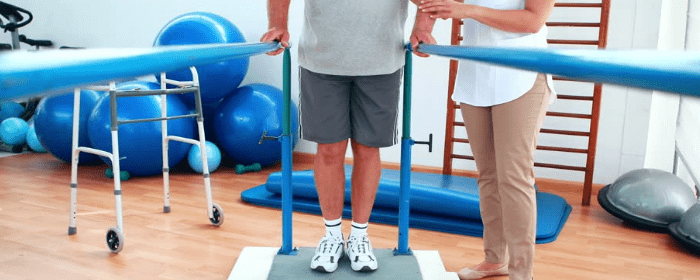Balance and gait training are forms of exercise that help patients who have neuromuscular conditions or injuries to their lower extremities. Balance and gait training is included in physical therapy and primarily focuses on improving the patient’s ability to walk.
What Does Gait Mean?
Gait simply means how you walk. A gait cycle describes the walking process. It involves picking your foot up off the ground, taking a step, landing on your foot, and lifting the opposite foot to begin the cycle again.
How Gait Training Works
Gait training may involve a variety of different exercises. Usually, in physical therapy, gait training involves walking on a treadmill under the supervision of your physical therapist.
Gait and balance training are always customized according to the specific needs of the patient, but the foundations focus on improving mobility and balance.
Increasing Mobility
Improving mobility involves working on the range of motion of your joints. This can include a variety of stretches and strength training exercises.
Improving Balance
When you walk, you spend a period of time on one leg while the other swings ahead to take the next step. Practicing balance exercises can help make walking safer and more efficient.
Benefits of Balance and Gait Training
Walking may seem a simple task, but for those with injuries and other conditions, it’s very hard work.
Some of the benefits of balance and gait training include:
- Improved muscle tone and flexibility
- Better range of motion
- Increased strength
- Better overall balance and coordination
Balance and gait training helps improve the overall positioning of the muscles while strengthening surrounding muscles. It can also help reduce tightness or spasticity in the muscles, which can decrease pain.
Balance and gait training not only helps address active issues but can work preventatively as well. Patients who go through balance and gait training can see an improved range of motion in the ankle joints, which can help them avoid compensatory balance and gait issues in the future.
For more health awareness blogs, please visit https://www.stemedix.com/blog.


 St. Petersburg, Florida
St. Petersburg, Florida
